The Quick Unlocking of Would-Be Trump Assassin’s Phone Reveals Power of Commercial Surveillance7/18/2024
Since 2015, Apple’s refusal to grant the FBI a backdoor to its encrypted software on the iPhone has been a matter of heated debate. When William Barr was the U.S. Attorney General, he accused Apple of failing to provide “substantive assistance” in the aftermath of mass shootings by helping the FBI break into the criminals’ phones.
Then in a case in 2020, the FBI announced it had broken into an Apple phone in just such a case. Barr said: “Thanks to the great work of the FBI – and no thanks to Apple …” Clearly, the FBI had found a workaround, though it took the bureau months to achieve it. Gaby Del Valle in The Verge offers a gripping account of the back-and-forth between law enforcement and technologists resulting, she writes, in the widespread adoption of mobile device extraction tools that now allow police to easily break open mobile phones. It was known that this technology, often using Israeli-made Cellebrite software, was becoming ever-more prolific. Still, observers did a double-take when the FBI announced that its lab in Quantico, Virginia, was able to break into the phone of Thomas Matthew Crooks, who tried to assassinate former President Trump on Saturday, in just two days. More than 2,000 law enforcement agencies in every state had access to such mobile device extraction tools as of 2020. The most effective of these tools cost between $15,000 and $30,000. It is likely, as with cell-site simulators that can spoof cellphones into giving up their data, that these phone-breaking tools are purchased by state and local law enforcement with federal grants. We noticed recently that Tech Dirt reported that for $100,000 you could have purchased a cell-site simulator of your very own on eBay. The model was old, vintage 2004, and is not likely to work well against contemporary phones. No telling what one could buy in a more sophisticated market. The takeaway is that the free market created encryption and privacy for customer safety, privacy, and convenience. The ingenuity of technologists responding to market demand from government agencies is now being used to tear down consumer encryption, one of their greatest achievements. We reported earlier this month that Los Angeles police are alarmed at the proliferation of wireless cameras installed in bushes that allow criminals to remotely surveil homes targeted for burglaries.
Now police in Braintree, Massachusetts, have arrested two men and a woman in connection to a series of burglaries enabled by these remote, wireless cameras. One of the suspects, a Colombian man wearing all black and a mask, was arrested and charged with resisting arrest and assault and battery on a police officer, after attempting to flee when he was allegedly caught retrieving a wireless camera in front of a home that had been burgled. The three people arrested are, according to Braintree police, connected to a group known as the South American Theft Group, which uses extensive surveillance, GPS tracking technology, and counter-surveillance measures to analyze the comings and goings of their victims. The commoditization of spyware and the popularization of sophisticated plans for surveillance is driving this revolution in neighborhood crime. What can we do? In addition to the customary precautions of installing locks and alarms, outdoor lights, and installing security cameras, you should avoid posting advance notice of family vacations. Criminals are watching your social media posts as well. We often report on the disturbing growth of surveillance camera systems in the hands of government, whether it’s through expansion of networks at city intersections, or convincing citizens to hand over video from their Ring and other private camera systems. We’ve reported on police aiming a camera at a home to create a 24-hour stakeout over eight months.
Now a new threat is emerging – criminals are leveraging these same surveillance tools for stakeouts to determine the best time to clean out your house. For years, burglars have scouted out target homes by posing as salesmen or dressing up as repairmen or utility workers. But that required shoe leather and a certain degree of risk. A report by Nathan Solis of The Los Angeles Times uncovers a troubling trend in Southern California going nationwide – criminals are installing hidden cameras in residential yards. Burglars are planting hidden cameras wreathed in plastic leaves and inserted into bushes to stake out unsuspecting homeowners’ yards to monitor the comings and goings of family members in order to plan their crimes with precision. Wi-Fi jammers, illegal to possess but legal to sell, are also often used to disable home security systems when the break-in does occur. In the face of such a threat, what can we do? The Times offers proactive steps you can take to protect against surveillance-enabled burglars. First, if you spot such a device you should alert police immediately, so law enforcement can track the secret trackers. You should have an electrician hardwire your burglary alarm with cables that go direct into your router so it cannot be turned off. Put a padlock on your circuit-breaker to further protect against someone turning off the power to your alarm system. Have lights activated by motion detectors and harden your points of entry. The Times also reports that police recommend placing Apple Air Tags or some other tracker placed inside a few valuables to allow the police to track your items if they should be stolen. In any event, as with the deep infiltration of the phones of police and journalists by cartels with “zero-day” software, we should expect any new surveillance technology in the hands of the government and law enforcement will wind up in the hands of criminals as well. We’ve long recounted the bad news on law enforcement’s use of facial recognition software – how it misidentifies people and labels them as criminals, particularly people of color. But there is good news on this subject for once: the Detroit Police Department has reached a settlement with a man falsely arrested on the basis of a bad match from facial recognition technology (FRT) that includes what many civil libertarians are hailing as a new national standard for police.
The list of injustices from false positives from FRT has grown in recent years. We told the story of Randall Reid, a Black man in Georgia, arrested for the theft of luxury goods in Louisiana. Even though Reid had never been to Louisiana, he was held in jail for a week. We told the story of Porchia Woodruff, a Detroit woman eight months pregnant, who was arrested in her driveway while her children cried. Her purported crime was – get this – a recent carjacking. Woodruff had to be rushed to the hospital after suffering contractions in her holding cell. Detroit had a particularly bad run of such misuses of facial recognition in criminal investigations. One of them was the arrest of Robert Williams in 2020 for the 2018 theft of five watches from a boutique store in which the thief was caught on a surveillance camera. Williams spent 30 hours in jail. Backed by the American Civil Liberties Union, the ACLU of Michigan, and the University of Michigan Civil Rights Litigation Initiative, Williams sued the police for wrongful arrest. In an agreement blessed by a federal court in Michigan, Williams received a generous settlement from the Detroit police. What is most important about this settlement agreement are the new rules Detroit has embraced. From now on:
Another series of reforms impose discipline on the way in which lineups of suspects or their images unfold. When witnesses perform lineup identifications, they may not be told that FRT was used as an investigative lead. Witnesses must report how confident they are about any identification. Officers showing images to a witness must themselves not know who the real suspect is, so they don’t mislead the witness with subtle, non-verbal clues. And photos of suspects must be shown one at a time, instead of showing all the photos at once – potentially leading a witness to select the one image that merely has the closest resemblance to the suspect. Perhaps most importantly, Detroit police officers will be trained on the proper uses of facial recognition and eyewitness identification. “The pipeline of ‘get a picture, slap it in a lineup’ will end,” Phil Mayor, a lawyer for the ACLU of Michigan told The New York Times. “This settlement moves the Detroit Police Department from being the best-documented misuser of facial recognition technology into a national leader in having guardrails in its use.” PPSA applauds the Detroit Police Department and ACLU for crafting standards that deserve to be adopted by police departments across the United States. As the adoption of Automated License Plate Readers (ALPRs) creates ubiquitous surveillance of roads and highways, the uses and abuses of these systems – which capture and store license plate data – received fresh scrutiny by a Virginia court willing to question Supreme Court precedent.
In Norfolk, 172 such cameras were installed in 2023, generating data on just about every citizen’s movements available to Norfolk police and shared with law enforcement in neighboring jurisdictions. Enter Jayvon Antonio Bell, facing charges of robbery with a firearm. In addition to alleged incriminating statements, the key evidence against Bell includes photographs of his vehicle captured by Norfolk’s Flock ALPR system. Bell’s lawyers argued that the use of ALPR technology without a warrant violated Bell’s Fourth and Fourteenth Amendment rights, as well as several provisions of the Virginia Constitution. The Norfolk Circuit Court, in a landmark decision, granted Bell's motion to suppress the evidence obtained from the license plate reader. This ruling, rooted in constitutional protections, weighs in on the side of privacy in the national debate over data from roadway surveillance. The court was persuaded that constant surveillance and data retention by ALPRs creates, in the words of Bell’s defense attorneys, a “dragnet over the entire city.” This motion to dismiss evidence has the potential to reframe Fourth Amendment jurisprudence. The Norfolk court considered the implications of the Supreme Court opinion Katz v. United States (1967), which established that what a person knowingly exposes to the public is not protected by the Fourth Amendment. In its decision, the court boldly noted that technological advancements since Katz have expanded law enforcement's capabilities, making it necessary to re-evaluate consequences for Fourth Amendment protections. The court also referenced a Massachusetts case in which limited ALPR use was deemed not to violate the Fourth Amendment. The Norfolk Circuit Court’s approach was again pioneering. The court found that the extensive network of the 172 ALPR cameras in Norfolk, which far exceeded the limited surveillance in the Massachusetts case, posed unavoidable Fourth Amendment concerns. The Norfolk court also expressed concern about the lack of training requirements for officers accessing the system, and the ease with which neighboring jurisdictions could share data. Additionally, the court highlighted vulnerabilities in ALPR technology, citing research showing that these systems are susceptible to error and hacking. This is a bold decision by this state court, one that underscores the need for careful oversight and regulation of ALPR systems. As surveillance technology continues to evolve, this court’s decision to suppress evidence from a license plate reader is a sign that at least some judges are ready to draw a line around constitutional protections in the face of technological encroachment. George Orwell wrote that in a time of deceit, telling the truth is a revolutionary act.
Revolutionary acts of truth-telling are becoming progressively more dangerous around the world. This is especially true as autocratic countries and weak democracies purchase AI software from China to weave together surveillance technology to comprehensively track individuals, following them as they meet acquaintances and share information. A piece by Abi Olvera posted by the Bulletin of Atomic Scientists describes this growing use of AI to surveil populations. Olvera reports that by 2019, 56 out of 176 countries were already using artificial intelligence to weave together surveillance data streams. These systems are increasingly being used to analyze the actions of crowds, track individuals across camera views, and pierce the use of masks or scramblers intended to disguise faces. The only impediment to effective use of this technology is the frequent Brazil-like incompetence of domestic intelligence agencies. Olvera writes: “Among other things, frail non-democratic governments can use AI-enabled monitoring to detect and track individuals and deter civil disobedience before it begins, thereby bolstering their authority. These systems offer cash-strapped autocracies and weak democracies the deterrent power of a police or military patrol without needing to pay for, or manage, a patrol force …” Olvera quotes AI surveillance expert Martin Beraja that AI can enable autocracies to “end up looking less violent because they have better technology for chilling unrest before it happens.” Olivia Solon of Bloomberg reports on the uses of biometric identifiers in Africa, which are regarded by the United Nations and World Bank as a quick and easy way to establish identities where licenses, passports, and other ID cards are hard to come by. But in Uganda, Solon reports, President Yoweri Museveni – in power for 40 years – is using this system to track his critics and political opponents of his rule. Used to catch criminals, biometrics is also being used to criminalize Ugandan dissidents and rival politicians for “misuse of social media” and sharing “malicious information.” The United States needs to lead by example. As our facial recognition and other systems grow in ubiquity, Congress and the states need to demonstrate our ability to impose limits on public surveillance, and legal guardrails for the uses of the sensitive information they generate. In the early 1920s revenue agents staked out a South Carolina home the agents suspected was being used as a distribution center for moonshine whiskey. The revenue agents were in luck. They saw a visitor arrive to receive a bottle from someone inside the house. The agents moved in. The son of the home’s owner, a man named Hester, realized that he was about to be arrested and sprinted with the bottle to a nearby car, picked up a gallon jug, and ran into an open field.
One of the agents fired a shot into the air, prompting Hester to toss the jug, which shattered. Hester then threw the bottle in the open field. Officers found a large fragment of the broken jug and the discarded bottle both contained moonshine whiskey. This was solid proof that moonshine was being sold. But was it admissible as evidence? After all, the revenue agents did not have a warrant. This case eventually wound its way to the Supreme Court. In 1924, a unanimous Court, presided over by Chief Justice (and former U.S. President) William Howard Taft, held that the Fourth Amendment did not apply to this evidence. Justice Oliver Wendell Holmes, writing the Court’s opinion, declared that “the special protection accorded by the Fourth Amendment to the people in their ‘persons, houses, papers and effects,’ is not extended to the open field.” This principle was later extended to exclude any garbage that a person throws away from Fourth Amendment protections. As strange as it may seem, this case about broken jugs and moonshine from the 1920s, Hester v. United States, provides the principle by which law enforcement officers freely help themselves to the information inside a discarded or lost cellphone – text messages, emails, bank records, phone calls, and images. We reported a case in 2022 in which a Virginia man was convicted of crimes based on police inspection of a cellphone he had left behind in a restaurant. That man’s attorney, Brandon Boxler, told the Daily Press of Newport News that “cellphones are different. They have massive storage capabilities. A search of a cellphone involves a much deeper invasion of privacy. The depth and breadth of personal and private information they contain was unimaginable in 1924.” In Riley v. California, the Supreme Court in 2018 upheld that a warrant was required to inspect the contents of a suspect’s cellphone. But the Hester rule still applies to discarded and lost phones. They are still subject to what Justice Holmes called the rules of the open field. The American Civil Liberties Union, ACLU Oregon, the Electronic Privacy Information Center, and other civil liberties organizations are challenging this doctrine before the Ninth Circuit in Hunt v. United States. They told the court that it should not use the same reasoning that has historically applied to garbage left out for collection and items discarded in a hotel wastepaper basket. “Our cell phones provide access to information comparable in quantity and breadth to what police might glean from a thorough search of a house,” ACLU said in a posted statement. “Unlike a house, though, a cell phone is relatively easy to lose. You carry it with you almost all the time. It can fall between seat cushions or slip out of a loose pocket. You might leave it at the check-out desk after making a purchase or forget it on the bus as you hasten to make your stop … It would be absurd to suggest that a person intends to open up their house for unrestrained searches by police whenever they drop their house key.” Yet that is the government position on lost and discarded cellphones. PPSA applauds and supports the ACLU and its partners for taking a strong stand on cellphone privacy. The logic of extending special protections to cellphones, which the Supreme Court has held contain the “privacies of life,” is obvious. It is the government’s position that tastes like something cooked up in a still. State of Alaska v. McKelveyWe recently reported that the Michigan Supreme Court punted on the Fourth Amendment implications in a case involving local government’s warrantless surveillance of a couple’s property with drone cameras. This was a disappointing outcome, one in which we had filed an amicus brief on behalf of the couple.
But other states are taking a harder look at privacy and aerial surveillance. In another recent case, the Alaska Supreme Court in State v. McKelvey upheld an appeals court ruling that the police needed to obtain a warrant before using an aircraft with officers armed with telephoto lenses to see if a man was cultivating marijuana in his backyard at his home near Fairbanks. In a well-reasoned opinion, Alaska’s top court found that this practice was “corrosive to Alaskans’ sense of security.” The state government had argued that the observations did not violate any reasonable expectation of privacy because they were made with commercially available, commonly used equipment. “This point is not persuasive,” the Alaska justices responded. “The commercial availability of a piece of technology is not an appropriate measure of whether the technology’s use by the government to surveil violates a reasonable expectation of privacy.” The court’s reasoning is profound and of national significance: “If it is not a search when the police make observations using technology that is commercially available, then the constitutional protection against unreasonable searches will shrink as technology advances … As the Seventh Circuit recently observed, that approach creates a ‘precarious circularity.’ Adoption of new technologies means ‘society’s expectations of privacy will change as citizens increasingly rely on and expect these new technologies.’” That is as succinct a description of the current state of privacy as any we’ve heard. The court found that “few of us anticipated, when we began shopping for things online, that we would receive advertisements for car seats and burp cloths before telling anyone there was a baby on the way.” We would add that virtually no one in the early era of social media anticipated that federal agencies would use it to purchase our most intimate and sensitive information from data brokers without warrants. The Alaska Supreme Court sees the danger of technology expansion with drones, which it held is corrosive to Alaskans’ sense of privacy. As we warned, drones are becoming ever cheaper, sold with combined sensor packages that can be not only deeply intrusive across a property, but actually able to penetrate into the interior of a home. The Alaska opinion is an eloquent warning that when it comes to the loss of privacy, we’ve become the proverbial frog, allowing ourselves to become comfortable with being boiled by degrees. This opinion deserves to be nationally recognized as a bold declaration against the trend of ever-more expanding technology and ever-more shrinking zones of privacy. Katie King in the Virginian-Pilot reports an in-depth account about the growing dependency of local law enforcement agencies on Flock Safety cameras, mounted on roads and intersections to catch drivers suspected of crimes. With more than 5,000 police agencies across the nation using these devices, the privacy implications are enormous.
Surveillance cameras have been in the news at lot lately, often in a positive light. Local news is consumed by murder suspects and porch pirates alike captured on video. The recently released video of a physical attack by rapper Sean “Diddy” Combs on a girlfriend several years ago has saturated media, reminding us that surveillance can protect the vulnerable. The crime-solving potential of license plate readers is huge. Flock’s software runs license plate numbers through law enforcement databases, allowing police to quickly track a stolen car, locate suspects fleeing a crime, or find a missing person. With such technologies, Silver and Amber alerts might one day become obsolete. As with facial recognition technology, however, license plate readers can produce false positives, ensnaring innocent people in the criminal justice system. King recounts the ordeal of an Ohio man who was arrested by police with drawn guns and a snarling dog. Flock’s license plate reader had falsely flagged his vehicle as having stolen tags. The good news is that Flock insists it is not even considering combining its network with facial recognition technology – reducing the possibility of both technologies flagging someone as dangerous. As with so many surveillance technologies, the greater issue in license-plate readers is not the technology itself, but how it might be used in a network. “There’s a simple principle that we’ve always had in this country, which is that the government doesn’t get to watch everybody all the time just in case somebody commits a crime – the United States is not China,” Jay Stanley, a senior analyst with the American Civil Liberties Union, told King. “But these cameras are being deployed with such density that it’s like GPS-tracking everyone.” License plate readers could, conceivably, be networked to track everywhere that everyone goes – from trips to mental health clinics, to gun stores, to houses of worship, and protests. With so many federal agencies already purchasing Americans’ sensitive data from data brokers, creating a national network of drivers’ whereabouts is just one more addition to what is already becoming a national surveillance system. With apologies to Jay Stanley, we are in serious danger of becoming China. As massive databases compile facial recognition, location data, and now driving routes, we need more than ever to head off the combination of all these measures. A good place to start would be for the U.S. Senate follow the example of the House by passing the Fourth Amendment Is Not For Sale Act. The City of Denver is reversing its previous stance against the use of police drones. The city is now buying drones to explore the effectiveness of replacing many police calls with remote aerial responses. A Denver police spokesman said that on many calls the police department will send drones first, officers second. When operators of drones see that a call was a false alarm, or that a traffic issue has been resolved, the police department will be free to devote scarce resources to more urgent priorities.
Nearby Arapahoe County already has a fleet of 20 such drones operated by 14 pilots. Arapahoe has successfully used drones to follow suspects fleeing a crime, provide live-streamed video and mapping of a tense situation before law enforcement arrives, and to look for missing people. In Loveland, Colorado, a drone was used to deliver a defibrillator to a patient before paramedics were able to get to the scene. The use of drones by local law enforcement as supplements to patrol officers is likely to grow. And why not? It makes sense for a drone to scout out a traffic accident or a crime scene for police. But as law enforcement builds more robust fleets of drones, they could be used not just to assess the seriousness of a 911 call, but to provide the basis for around-the-clock surveillance. Modern drones can deliver intimate surveillance that is more invasive than traditional searches. They can be packed with cell-simulator devices to extract location and other data from cellphones in a given area. They can loiter over a home or peek in someone’s window. They can see in the dark. They can track people and their activities through walls by their heat signatures. Two or more cameras combined can work in stereo to create 3D maps inside homes. Sensor fusion between high definition, fully maneuverable cameras can put all these together to essentially give police an inside look at a target’s life. Drones with such high-tech surveillance packages can be had on the market for around $6,000. As with so many other forms of surveillance, the modest use of this technology sounds sensible, until one considers how many other ways they can be used. Local leaders at the very least need to enact policies that put guardrails on these practices before we learn, the hard way, how drones and the data they generate can be misused. A report by The New York Time’s Vivian Wang in Beijing and one by Tech Policy’s Marwa Sayed in New York describes the twin strategies for surveilling a nation’s population, in the United States as well as in China.
Wang chronicles the move by China’s dictator, Xi Jinping, to round out the pervasive social media and facial recognition surveillance capability of the state by bringing back Mao-era human snitching. Wang writes that Xi wants local surveillance that is “more visible, more invasive, always on the lookout for real or perceived threats. Officers patrol apartment buildings listening for feuding neighbors. Officials recruit retirees playing chess outdoors as extra eyes and ears. In the workplace, employers are required to appoint ‘safety consultants’ who report regularly to the police.” Xi, Wang reports, explicitly links this new emphasis on human domestic surveillance to the era when “the party encouraged residents to ‘re-educate’ purported political enemies, through so-called struggle sessions where people were publicly insulted and humiliated …” Creating a society of snitches supports the vast network of social media surveillance, in which every “improper” message or text can be reviewed and flagged by AI. Chinese citizens are already followed everywhere by location beacons and a national network of surveillance cameras and facial recognition technology. Marwa Sayed writes about the strategy of technology surveillance contained in several bills in New York State. One bill in the state legislature would force the owners of driver-for-hire vehicles to install rear-facing cameras in their cars, presumably capturing private conversations by passengers. Another state bill would mandate surveillance cameras at racetracks to monitor human and equine traffic, watching over people in their leisure time. “Legislators seem to have decided that the cure to what ails us is a veritable panopticon of cameras that spares no one and reaches further and further into our private lives,” Sayed writes. She notes another measure before the New York City Council that would require the Department of Sanitation to install surveillance cameras to counter the insidious threat of people putting household trash into public litter baskets. Sayed writes: “As the ubiquity of cameras grows, so do the harms. Research shows that surveillance and the feeling it creates of constantly being watched leads to anxiety and paranoia. People may start to feel there is no point to personal privacy because you’ll be watched wherever you go. It makes us wary about taking risks and dampens our ability to interact with one another as social creatures.” Without quite meaning to, federal, state, and local authorities are merging the elements of a national surveillance system. This system draws on agencies’ purchases of our sensitive, personal information from data brokers, as well as increasingly integrated camera, facial recognition, and other surveillance networks. And don’t think that organized human snitching can’t come to these shores either. During World War One, the federal government authorized approved citizens to join neighborhood watch groups with badges inscribed with the words, “American Protection League – Secret Service.” At a time when Americans were sent to prison for opposing the war, the American Protection League kept tabs on neighbors, always on the watch out for anyone who seemed insufficiently enthusiastic about the war. Americans could be reported to the Department of Justice for listening to Beethoven on their phonographs or checking out books about German culture from the library. Today, large numbers of FBI and other government employees secretly “suggest” that social media companies remove posts that contain “disinformation.” They monitor social media to track posts of people, whether targeted by the FBI as traditional Catholics or observant Muslims, for signs of extremism. As world tension grows between the United States and China, Russia, Iran and North Korea, something like the American Protection League might be resurrected soon in response to a foreign policy crisis. Its digital ghost is already watching us. Suspect: “We Have to Follow the Law. Why Don’t They?" Facial recognition software is useful but fallible. It often leads to wrongful arrests, especially given the software’s tendency to produce false positives for people of color.
We reported in 2023 on the case of Randall Reid, a Black man in Georgia, arrested and held for a week by police for allegedly stealing $10,000 of Chanel and Louis Vuitton handbags in Louisiana. Reid was traveling to a Thanksgiving dinner near Atlanta with his mother when he was arrested. He was three states and seven hours away from the scene of this crime in a state in which he had never set foot. Then there is the case of Portia Woodruff, a 32-year-old Black woman, who was arrested in her driveway for a recent carjacking and robbery. She was eight months pregnant at the time, far from the profile of the carjacker. She suffered great emotional distress and suffered spasms and contractions while in jail. Some jurisdictions have reacted to the spotty nature of facial recognition by requiring every purported “match” to be evaluated by a large team to reduce human bias. Other jurisdictions, from Boston to Austin and San Francisco, responded to the technology’s flaws by banning the use of this technology altogether. The Washington Post’s Douglas MacMillan reports that officers of the Austin Police Department have developed a neat workaround for the ban. Austin police asked law enforcement in the nearby town of Leander to conduct face searches for them at least 13 times since Austin enacted its ban. Tyrell Johnson, a 20-year-old man who is a suspect in a robbery case due to a facial recognition workaround by Austin police told MacMillan, “We have to follow the law. Why don’t they?” Other jurisdictions are accused of working around bans by posting “be on the lookout” flyers in other jurisdictions, which critics say is meant to be picked up and run through facial recognition systems by other police departments or law enforcement agencies. MacMillian’s interviews with defense lawyers, prosecutors, and judges revealed the core problem with the use of this technology – employing facial recognition to generate leads but not evidence. They told him that prosecutors are not required in most jurisdictions to inform criminal defendants they were identified using an algorithm. This highlights the larger problem with high-tech surveillance in all its forms: improperly accessed data, reviewed without a warrant, can allow investigators to work backwards to incriminate a suspect. Many criminal defendants never discover the original “evidence” that led to their prosecution, and thus can never challenge the basis for their case. This “backdoor search loophole” is the greater risk, whether one is dealing with databases of mass internet communications or facial recognition. Thanks to this loophole, Americans can be accused of crimes but left in the dark about how the cases against them were started. The long back-and-forth between Michigan’s Long Lake Township and Todd and Heather Maxon ended with the Michigan Supreme Court punting on the Fourth Amendment implications of drone surveillance over private property.
An appellate court had held that the township’s warrantless use of a drone three times in 2017 to photograph the Todd’s property was an unreasonable, warrantless search, constituting a Fourth Amendment violation. PPSA filed a brief supporting the Maxons before the Michigan Supreme Court, alerting the court to the danger of intimate searches of home and residents by relatively inexpensive drones now on the market. To demonstrate the privacy threat of drones, PPSA informed the court that commercially available drones have thermal cameras that can penetrate beyond what is visible to the naked eye. They can be equipped with animal herd tracking algorithms that can enhance the surveillance of people. Drones can swarm and loiter, providing round-the-clock surveillance. They can carry lightweight cell-site simulators that prompt the mobile phones of people inside the targeted home to give up data that reveals deeply personal information. Furthermore, PPSA’s brief states that drones “can see around walls, see in the dark, track people by heat signatures, and recognize and track specific people by their face.” PPSA agreed that even ordinary photography from a camera hovering over the Maxon’s property violated, in the words of an appellate court, the Maxon’s reasonable expectation of privacy. But in a unanimous decision, Michigan’s top court was having none of this. It concluded that the exclusionary rule – a judicial doctrine in which evidence is excluded or suppressed – is generally applied when law enforcement violates a defendant’s constitutional rights in a criminal case. The justices remanded the case based upon a procedural issue unrelated to the Fourth Amendment question. The Michigan Supreme Court, therefore, declined to address “whether the use of an aerial drone under the circumstances presented here is an unreasonable search in violation of the United States or Michigan Constitutions.” A crestfallen Todd Maxon responded, “Like every American, I have a right to be secure on my property without being watched by a government drone.” The issue between the township and the Maxons was the contention that, behind the shelter of trees, the couple was growing a salvage operation. This violated an earlier settlement agreement the Maxons had made pledging not to keep a junkyard on their five-acre property. Given the potential for drones to use imaging and sensor technology to violate the intimate lives of families, it is all but inevitable that a better – and uglier – test case will come along. If anything, this ruling makes it a virtual certainty. Today, Laredo – Tomorrow, Los Angeles and Little Rock? When the U.S. military dispatches a drone to strike a target, it often uses a wireless device detection system that can correlate signals from terrorists’ cellphones and other devices emanating from within a target vehicle. Under such circumstances, calls and other signals from terrorists’ devices lead missiles straight into a target’s car.
As law and order along the U.S. border breaks down, it is not surprising that two Texas jurisdictions – Webb and Val Verde counties – purchased such military-grade wireless detection systems. NOTUS.org reports that law enforcement along the border can detect in-vehicle wireless signals and merge them with systems that track vehicles’ license plates to isolate a given car. This is yet another sign that the U.S. Supreme Court urgently needs to revisit the limits that federal and local law enforcement agencies are placing on the Court’s 2018 Carpenter opinion, which requires a probable cause warrant before officers can use cell tower GPS data to access a suspect’s location history. Agencies have not internalized the basic principles of that ruling. Instead, they’ve rationalized that if they are not specifically accessing historical cell tower data, they are complying with the law. To be fair, parts of the border are beginning to resemble a war zone, with out-of-control illegal immigration organized by criminal cartels. Given the current lawless state of the U.S.-Mexican border, local governments are using Department of Justice grants to purchase systems similar to those used by the U.S. military and CIA. Captain Federico Calderon of the Sheriff’s office of Webb County, which includes the large border city of Laredo, told NOTUS that the county purchased a “very restricted” version. Capt. Calderon said that Webb County is using this technology as a pilot program to scan for signals coming from the empty quarters of ranches where no one should be. Val Verde County did not respond to NOTUS’s questions. The potential for widespread abuse of this technology rivals that of cell-site simulators and data purchases. NOTUS reports “as people walk around with headphones, fitness wearables and other devices, emitting a cloud of radio frequency signals unique to them, their data can be linked to a car, even after they have ditched the car.” Local law enforcement officials want such technology to identify human traffickers and cartel smugglers. It is doubtful, however, that this technology will remain restricted to such narrow purposes. And as with purchased data and cellsite simulators, the introduction of this new militarized technology compromises the privacy of many more people – friends, family, and bystanders. “We are well beyond the idea that people have no privacy in public,” Jennifer Grannick of the American Civil Liberties Union told NOTUS. “Here, they’re installing this mass surveillance system.” With the spread of often violent political protests across the nation, a high level of terror alert from the FBI, and college campuses convulsed by tent cities, there will be no lack of reasons for law enforcement to add one more capability to what is evolving into a national surveillance state. It is reasonable to use technology to control the border. But it is up to Congress and the courts to keep a close eye on the widespread introduction of military wireless device detection systems to track Americans. Why did the “unmasking” of Americans’ identities in the global data trawl of U.S. intelligence agencies increase by 172 percent, from 11,511 times in 2022 to 31,330 times in 2023?
Government officials briefing the media say that most of this increase was a defensive response to a hostile intelligence agency launching a massive cyberattack on U.S. infrastructure, possibly infiltrating the digital systems of dams, power plants, or the like. What we do know for sure is that this authority has been abused before. Unmasking occurs when American citizens or “U.S. persons” are caught up, incidentally, in warrantless foreign surveillance. When this happens, the identities of these Americans are routinely hidden from government agents, or “masked.” But senior officials can request that the NSA “unmask” those individuals. This should be a relatively rare occurrence. Yet for some reason, over a 12-month period between 2015 and 2016, the Obama Administration unmasked 9,217 persons. Former UN Ambassador Samantha Power, or someone acting in her name, was a prolific unmasker. Power’s name was used to request unmasking of Americans more than 260 times. Large-scale unmasking continued under the Trump administration, with 2018 seeing 16,721 unmaskings, an increase of 7,000 from the year before. In recent years, the number hovered around 10,000. Now it is three times that many. This is a concern if some subset of these unmaskings (which mostly involve an email account or IP address, not a name) were for named individuals for political purposes. Consider that in 2016, at least 16 Obama administration officials, including then-Vice President Joe Biden, requested unmaskings of Donald Trump’s advisors. Outgoing National Security Advisor Susan Rice took a particular interest in unmasking members of President-elect Trump’s transition team. We are left to wonder if all of this rise in unmasking numbers can be explained away by Chinese or Russian hackers, or if some portion of them reflect the use of this authority for political purposes. Were prominent politicians, officeholders, or candidates unmasked? These raw numbers come from the government’s Annual Statistical Transparency report. This report on intelligence community activities from the Office of the Director of National Intelligence offers revealing numbers, but often without detail or explanation that would explain such jumps. All we have to rely on are media briefs that at times seem more forthcoming than the briefings available to Members of Congress, even those tasked with oversight of intelligence agencies in the House and Senate Judiciary Committees. As these numbers rise, the American people deserve more information and a solid assurance that these authorities will never again be used for political purposes by either party. Five Maine lobstermen are suing Maine’s Department of Marine Resources after the agency issued regulations requiring electronic tracking of vessels fishing in federal waters. The plaintiffs allege such tracking violates privacy rights, due process, and equal protection under the Constitution. It’s a red-hot, lobster pot controversy with significant implications on the ever-evolving body of law surrounding geolocation tracking and surveillance.
Maine adopted the tracking regulation in December to comply with a requirement issued by the Atlantic States Marine Fisheries Commission, whose overarching policy objective here is to help protect the North Atlantic right whale. This is certainly a noble objective, but it brings with it troubling implications. Maine Department of Marine Resources Commissioner Patrick Keliher makes the argument that because lobstermen work in a “closely regulated industry,” they have “a greatly reduced expectation of privacy.” It’s a common refrain for those seeking to impose new surveillance measures. But as attorney John Vecchione of the New Civil Liberties Alliance once said, “the expansion of closely regulated-industry theory is a huge, huge danger to liberties for everybody.” Indeed, as society, the economy, and ensuing regulations grow, simply having to get a license could subject any business to warrantless inspections. Such an argument could be used to attach trackers to realtors as they move around from house to house, salespersons, contractors, or any other group of mobile professionals. The U.S. District Court for the District of Maine, where the case was filed, might take a page from the Fifth Circuit, which in 2023 struck down a U.S. Department of Commerce requirement that would have forced charter boat owners to install, at their own expense, a “vessel monitoring system” that would continuously transmit their boats’ location, regardless of whether it was being used for commercial or personal purposes. In that case, the court found that it “borders on incredible” that the government claimed it failed to notice personal privacy concerns in public comments to its rule. The court, further, found that discovery of prime fishing spots in the Gulf would constitute a hardship for many charter operators. Similarly, attorneys for the suing lobstermen argue that they “jealously guard the whereabouts and the techniques they use to place their traps. This is directly correlated to their ability to make a living.” It’s not just fishing locations that are at risk, however. The U.S. Supreme Court has repeatedly held that warrantless GPS tracking constitutes an unlawful search. Tracking someone’s movements, it needn’t be emphasized, can reveal quite a lot about their personal and private lives. As the Maine federal court considers these issues, we side unequivocally with the lobstermen. Simply put, there must be a way to balance the privacy interests of fishermen and the policy objective of protecting marine life. Top-down surveillance mandates seem a poor fit. Surveillance is key to fighting crime and catching criminals, but the same system that protects us also endangers the privacy and security of ordinary citizens. It would be naïve to imagine that mass and indiscriminate surveillance will only be used against the “bad guys” – or that we can even all agree on who the “bad guys” are over time.
Such concerns come to top of mind with stories, like that of California Gov. Gavin Newsom, who recently announced a plan to combat crime in Oakland by installing 480 high-tech cameras on the city’s busiest roads and freeways to catch criminals. As commendable as that sounds, we have to ask what else it will catch – and what will local and state law enforcement do with all that information? These cameras will capture the make and model of vehicles, as well as read license plates, alerting police if a suspect’s vehicle is spotted. Installed with support from four large corporations with a presence in the Bay Area, it’s a fair bet that these cameras are likely very popular with residents. Oakland has seen skyrocketing rates of crime, with car jackings, thefts, and armed robberies becoming commonplace. The city recently made national news when the iconic In-N-Out burger chain shuttered its first restaurant in Oakland out of concern for its employees. The planned installation of mass surveillance on Oakland’s streets is just the latest story in a national trend. The left-leaning Atlanta Community Press Collective reports that local law enforcement in Atlanta is promoting an electronic surveillance system of people who wear court-ordered electronic monitoring while on parole or awaiting trial. Talitrix, a surveillance company, “uses geofencing and proprietary algorithms to produce a ‘Talitrix score’ that agencies can use to determine whether someone’s behavior on pretrial release or probation should subject them to re-arrest and incarceration.” Talitrix proposes to integrate its technology with that of another surveillance firm, Fusus, which supports Atlanta’s expansive camera network. That network links public video feeds with those from stores, shopping malls, apartment buildings, and homes to combine public and private cameras to give the police constant citywide surveillance. The Atlanta Community Press Collective reports that integration “would combine GPS-enabled digital shackles featuring biometric monitoring capabilities with the growing canopy of Fusus-linked video cameras” across Atlanta. This system would put up to 900 people under constant video, audio, biometric, and GPS surveillance during their pre-trial release, placing them in what Cooper Quinton of the Electronic Frontier Foundation calls “an open-air prison.” Quinton added, “Even if you have not yet been convicted of a crime under this system, you and your family could be subject to constant, targeted video surveillance.” Video surveillance and automated license plate readers combine with local use of cell-site simulators (which follow a cellphone user’s location), facial recognition, aerial video surveillance, “predictive policing,” location tracking, and social media monitoring to create a system of continuous surveillance. Add AI into the mix, and you have all the elements to create a Chinese-style surveillance state. The expansion of surveillance is being done, as we have seen in Oakland, with the admirable intention of curbing runaway crime. Without proper safeguards and limits on how collected data can be used, however, the knitting together of all these data streams makes the potential for Orwellian surveillance all but certain. Our choices come down to tradeoffs between security and freedom. We can limit access to surveillance without a warrant and apply limits on data collection. Otherwise, China shows us the consequences of a complete sacrifice of liberty for security – you get neither as the government becomes the greatest threat to both. To learn what your local government can do with technology check out the Electronic Frontier Foundation’s updated Street Level Surveillance hub. In the meanwhile, we all need to understand that there are tradeoffs between increased safety and reduced privacy. There is a tipping point, which we are approaching, in which the networks that protect us can become the new threat. Byron Tau – journalist and author of Means of Control, How the Hidden Alliance of Tech and Government Is Creating a New American Surveillance State – discusses the details of his investigative reporting with Liza Goitein, senior director of the Brennan Center for Justice's Liberty & National Security Program, and Gene Schaerr, general counsel of the Project for Privacy and Surveillance Accountability.
Byron explains what he has learned about the shadowy world of government surveillance, including how federal agencies purchase Americans’ most personal and sensitive information from shadowy data brokers. He then asks Liza and Gene about reform proposals now before Congress in the FISA Section 702 debate, and how they would rein in these practices. A federal court has given the go-ahead for a lawsuit filed by Just Futures Law and Edelson PC against Western Union for its involvement in a dragnet surveillance program called the Transaction Record Analysis Center (TRAC).
Since 2022, PPSA has followed revelations on a unit of the Department of Homeland Security that accesses bulk data on Americans’ money wire transfers above $500. TRAC is the central clearinghouse for this warrantless information, recording wire transfers sent or received in Arizona, California, New Mexico, Texas, and Mexico. These personal, financial transactions are then made available to more than 600 law enforcement agencies – almost 150 million records – all without a warrant. Much of what we know about TRAC was unearthed by a joint investigation between ACLU and Sen. Ron Wyden (D-OR). In 2023, Gene Schaerr, PPSA general counsel, said: “This purely illegal program treats the Fourth Amendment as a dish rag.” Now a federal judge in Northern California determined that the plaintiffs in Just Future’s case allege plausible violations of California laws protecting the privacy of sensitive financial records. This is the first time a court has weighed in on the lawfulness of the TRAC program. We eagerly await revelations and a spirited challenge to this secretive program. The TRAC intrusion into Americans’ personal finances is by no means the only way the government spies on the financial activities of millions of innocent Americans. In February, a House investigation revealed that the U.S. Treasury’s Financial Crimes Enforcement Network (FinCEN) has worked with some of the largest banks and private financial institutions to spy on citizens’ personal transactions. Law enforcement and private financial institutions shared customers’ confidential information through a web portal that connects the federal government to 650 companies that comprise two-thirds of the U.S. domestic product and 35 million employees. TRAC is justified by being ostensibly about the border and the activities of cartels, but it sweeps in the transactions of millions of Americans sending payments from one U.S. state to another. FinCEN set out to track the financial activities of political extremists, but it pulls in the personal information of millions of Americans who have done nothing remotely suspicious. Groups on the left tend to be more concerned about TRAC and groups on the right, led by House Judiciary Chairman Jim Jordan, are concerned about the mass extraction of personal bank account information. The great thing about civil liberties groups today is their ability to look beyond ideological silos and work together as a coalition to protect the rights of all. For that reason, PPSA looks forward to reporting and blasting out what is revealed about TRAC in this case in open court. Any revelations from this case should sink in across both sides of the aisle in Congress, informing the debate over America’s growing surveillance state. The best intentions of Amazon to reduce easy, warrantless surveillance of the American people are being undermined by cheap, Chinese cameras.
PPSA has long tracked the privacy threat of Amazon’s cooperative agreements with more than 2,000 police and fire departments to solicit Ring videos for neighborhood surveillance from customers. In January, we celebrated Amazon’s disabling of its Request for Access tool, a feature that facilitated requests from law enforcement to ask Ring camera owners to volunteer video of their neighbors and neighborhood. The Electronic Frontier Foundation was so impressed by Amazon’s move that they removed Ring from its Atlas of Surveillance, a comprehensive, national map of points of police surveillance. In March, EFF removed 2,530 data points from its Atlas because Amazon will no longer facilitate warrantless requests for consumer video footage. As EFF notes, this does not mean that the police won’t still be able to access Ring footage. PPSA reported in February that law enforcement in central Texas are ho-hum about Amazon’s policy change, telling reporters they will simply appeal to individual households to ask for videos. But at least this means police requests will be tied to actual events, requiring an expenditure of shoe leather after a burglary, car accident, or fire, instead of a broad array of surveillance footage available for police to examine. Around the same time, journalists Stacey Higginbotham and Daniel Wroclawski of Consumer Reports (CR) demonstrated the alarming vulnerability of cheap, Chinese doorbell cameras sold by Amazon, as well as by Walmart, Sears, and Chinese online retailers Shein and Temu. These cameras are sold by the thousands under an ever-shifting array of brand names, but all are connected to the same app called Awit, owned by Shenzen-based Eken Group Ltd., and apparently managed in North America out of an apartment in east Los Angeles County. Higginbotham and Wroclawski reported that with the use of the Awit app, these cameras were easily compromised and used for remote surveillance of their owners – the exact opposite of the purpose of a security camera. They wrote: “People who face threats from a stalker or estranged abusive partner are sometimes spied on through their phones, online platforms, and connected smartphone devices. The vulnerabilities CR found could allow a dangerous person to take control of the video doorbell on their target’s home, watching when they and their family members come and go.” Worse, these doorbells expose their owners’ home IP address and Wi-Fi network name to the internet without encryption. They also lack a visible ID issued by the Federal Communications Commission, making them illegal to sell in the United States. Weeding out junk products is probably a difficult task for Amazon, given the shape-shifting, brand-changing nature of some providers. Like many Chinese-made products, these doorbell cameras are booby-trapped, either through sloppiness or by intention, or perhaps both. It doesn’t take a lot of imagination to envision them being used against U.S. officials, civilian or military, by Chinese intelligence during a crisis. Imagine the intelligence value of seeing National Security Council personnel leaving their homes at the same time around 2 a.m. Amazon’s top search results showed few of these Chinese cameras available now, though it is hard to tell given the plethora of ever-changing brand names. Perhaps Amazon products should come with a cautionary “China” sticker for consumers. U.S. Treasury and FBI Targeted Americans for Political BeliefsThe House Judiciary Committee and its Select Subcommittee on the Weaponization of the Federal Government issued a report on Wednesday revealing secretive efforts between federal agencies and U.S. private financial institutions that “show a pattern of financial surveillance aimed at millions of Americans who hold conservative viewpoints or simply express their Second Amendment rights.”
At the heart of this conspiracy is the U.S. Treasury Department’s Financial Crimes Enforcement Network (FinCEN) and the FBI, which oversaw secret investigations with the help of the largest U.S. banks and financial institutions. They did not lack for resources. Law enforcement and private financial institutions shared customers’ confidential information through a web portal that connects the federal government to 650 companies that comprise two-thirds of the U.S. domestic product and 35 million employees. This dragnet investigation grew out of the aftermath of the Jan. 6 riot in the U.S. Capitol, but it quickly widened to target the financial transactions of anyone suspiciously MAGA or conservative. Last year we reported on how the Bank of America volunteered the personal information of any customer who used an ATM card in the Washington, D.C., area around the time of the riot. In this newly revealed effort, the FBI asked financial services companies to sweep their database to look for digital transactions with keywords like “MAGA” and “Trump.” FinCEN also advised companies how to use Merchant Category Codes (MCC) to search through transactions to detect potential “extremists.” Keywords attached to suspicious transactions included recreational stores Cabela’s, Bass Pro Shop, and Dick’s Sporting Goods. The committee observed: “Americans doing nothing other than shopping or exercising their Second Amendment rights were being tracked by financial institutions and federal law enforcement.” FinCEN also targeted conservative organizations like the Alliance Defending Freedom or the Eagle Forum for being demonized by a left-leaning organization, the Institute for Strategic Dialogue in London, as “hate groups.” The committee report added: “FinCEN’s incursion into the crowdfunding space represents a trend in the wrong direction and a threat to American civil liberties.” One doesn’t have to condone the breaching of the Capitol and attacks on Capitol police to see the threat of a dragnet approach that lacked even a nod to the concept of individualized probable cause. What was done by the federal government to millions of ordinary American conservatives could also be done to millions of liberals for using terms like “racial justice” in the aftermath of the riots that occurred after the murder of George Floyd. These dragnets are general warrants, exactly the kind of sweeping, indiscriminate violations of privacy that prompted this nation’s founders to enact the Fourth Amendment. If government agencies cannot satisfy the low hurdle of probable cause in an application for a warrant, they are apt to be making things up or employing scare tactics. If left uncorrected, financial dragnets like these will support a default rule in which every citizen is automatically a suspect, especially if the government doesn’t like your politics. China is planning to build a large base on the moon in the 2030s, with science labs, housing for astronauts, and a fleet of robots. It is also planning to bring up the advanced technologies that enable its 600-million camera Skynet system to surveil the Chinese people.
“Skynet” is, of course, familiar to American ears as the AI villain in the Terminator movies. It is also the actual term China uses in English for its surveillance network, a term deriving from an ancient Chinese proverb that includes the line, “There is forever a net in the sky.” Stephen Chen of the South China Morning Post informs us that the meaning here is that those who do wrong or resist the regime will not escape the celestial net. China’s experience with the Skynet system, which fields two cameras for every Chinese adult, has taught the regime how to manage such amounts of surveillance data. This knowledge will be useful in building out a Skynet for the moon. The purpose, say Chinese aerospace agencies, is to create a massive video surveillance system that is “capable of identifying, locating, tracking and aiming at suspicious targets independently.” If so, perhaps the moon really will be looking down on us. When we covered a Michigan couple suing their local government for sending a drone over their property to prove a zoning violation, we asked if there are any legal limits to aerial surveillance of your backyard.
In this case before the Michigan Supreme Court, Maxon v. Long Lake Township, counsel for the local government said that the right to inspect our homes goes all the way to space. He described the imaging capability of Google Earth satellites, asking: “If you want to know whether it’s 50 feet from this house to this barn, or 100 feet from this house to this barn, you do that right on the Google satellite imagery. And so given the reality of the world we live in, how can there be a reasonable expectation of privacy in aerial observations of property?” One justice reacted to the assertion that if Google Earth could map a backyard as closely and intimately as a drone, that would be a search. “Technology is rapidly changing,” the justice responded. “I don’t think it is hard to predict that eventually Google Earth will have that capacity.” Now William J. Broad of The New York Times reports that we’re well beyond Google Earth’s imaging of barns and houses. Try dinner plates and forks. Albedo Space of Denver is making a fleet of 24 small, low orbit satellites that will use imagery to guide responders in disasters, such as wildfires and other public emergencies. It will improve the current commercial standard of satellite imaging from a focal length of about a foot to about four inches. A former CIA official with decades of satellite experience told Broad that it will be a “big deal” when people realize that anything they are trying to hide in their backyards will be visible. Skinny-dipping in the pool will only be for the supremely confident. To his credit, Albedo chief Topher Haddad said, “we’re acutely aware of the privacy implications,” promising that management will be selective in their choice of clients on a case-by-case basis. It is good to know that Albedo likely won’t be using its technology to catch zone violators or backyard sunbathers. We’ve seen, however, that what is cutting-edge technology today will be standard tomorrow. This is just one more way in which the velocity of technology is outpacing our ability to adjust. There is, of course, one effective response. We can reject the Michigan town’s counsel argument who said, essentially, that privacy’s dead and we should just get over it. Courts and Congress should define orbital and aerial surveillance as searches requiring a probable cause warrant, as defined by the Fourth Amendment of the U.S. Constitution, before our homes and backyards can be invaded by eyes from above. The greatest danger to privacy is not that Albedo will allow government snoops to watch us in real time. The real threat is a satellite company’s ability to collect private images by the tens of millions. Such a database could then be sold to the government just as so much commercial digital information is now being sold to the government by data brokers. This is all the more reason for Congress to import the privacy-protecting warrant provisions of the Fourth Amendment Is Not For Sale Act into the reauthorization of FISA Section 702. In the last century, the surveillance state was held back by the fact that there could never be enough people to watch everybody. Whether Orwell’s fictional telescreens or the East German Stasi’s apparatus of civilian informants, there could simply never be enough watchers to follow every dissident, while having even more people to put all the watcher’s information together (although the Stasi’s elaborate filing system came as close as humanly possible to omniscience).
Now, of course, AI can do the donkey work. It can decide when a face, or a voice, a word, or a movement, is significant and flag it for a human intelligence officer. AI can weave data from a thousand sources – cell-site simulators, drones, CCTV, purchased digital data, and more – and thereby transform data into information, and information into actionable intelligence. The human and institutional groundwork is already in place to feed AI with intelligence from local, national, and global sources in more than 80 “fusion centers” around the country. These are sites where the National Counterterrorism Center coordinate intelligence from the 17 federal intelligence agencies with local and state law enforcement. FBI, NSA, and Department of Homeland Security intelligence networks get mixed in with intelligence from the locals. If you’ve ever reported something suspicious to the “if you see something, say something” ads, a fusion center is where your report goes. With terrorists and foreign threats ever present, it makes sense to share intelligence between agencies, both national and local. But absent clear laws and constitutional limits, we are also building the basics of a full-fledged surveillance state. With no warrant requirements currently in place for federal agencies to inspect Americans’ purchased digital data, there is nothing to stop the fusion of global, national, and local intelligence from a thousand sources into one ever-watchful eye. Step by step, day by day, new technologies, commercial entities and government agencies add new sources and capabilities to this ever-present surveillance. The latest thread in this weave comes from Axon, the maker of Tasers and body cameras for police. Axon has just acquired Fusus, which grants access to the camera networks of shopping centers, hospitals, residential communities, houses of worship, schools, and urban environments for more than 250 police “real-time crime centers.” Weave that data with fusion centers, and voilà, you are living in a Panopticon – a realm where you are always seen and always heard. To make surveillance even more thorough, Axon’s body cameras are being sold to healthcare and retail facilities to be worn by employees. Be nice to your nurse. Such daily progress in the surveillance state provides all the more reason for the U.S. House in its debate over the reauthorization of FISA Section 702 to include a warrant requirement before the government can freely swim in this ocean of data – our personal information – without restraint. The word from Capitol Hill is that Speaker Mike Johnson is scheduling a likely House vote on the reauthorization of FISA’s Section 702 this week. We are told that proponents and opponents of surveillance reform will each have an opportunity to vote on amendments to this statute.
It is hard to overstate how important this upcoming vote is for our privacy and the protection of a free society under the law. The outcome may embed warrant requirements in this authority, or it may greatly expand the surveillance powers of the government over the American people. Section 702 enables the U.S. intelligence community to continue to keep a watchful eye on spies, terrorists, and other foreign threats to the American homeland. Every reasonable person wants that, which is why Congress enacted this authority to allow the government to surveil foreign threats in foreign lands. Section 702 authority was never intended to become what it has become: a way to conduct massive domestic surveillance of the American people. Government agencies – with the FBI in the lead – have used this powerful, invasive authority to exploit a backdoor search loophole for millions of warrantless searches of Americans’ data in recent years. In 2021, the secret Foreign Intelligence Surveillance Court revealed that such backdoor searches are used by the FBI to pursue purely domestic crimes. Since then, declassified court opinions and compliance reports reveal that the FBI used Section 702 to examine the data of a House Member, a U.S. Senator, a state judge, journalists, political commentators, 19,000 donors to a political campaign, and to conduct baseless searches of protesters on both the left and the right. NSA agents have used it to investigate prospective and possible romantic partners on dating apps. Any reauthorization of Section 702 must include warrants – with reasonable exceptions for emergency circumstances – before the data of Americans collected under Section 702 or any other search can be queried, as required by the U.S. Constitution. This warrant requirement must include the searching of commercially acquired information, as well as data from Americans’ communications incidentally caught up in the global communications net of Section 702. The FBI, IRS, Department of Homeland Security, the Pentagon, and other agencies routinely buy Americans’ most personal, sensitive information, scraped from our apps and sold to the government by data brokers. This practice is not authorized by any statute, or subject to any judicial review. Including a warrant requirement for commercially acquired information as well as Section 702 data is critical, otherwise the closing of the backdoor search loophole will merely be replaced by the data broker loophole. If the House declines to impose warrants for domestic surveillance, expect many politically targeted groups to have their privacy and constitutional rights compromised. We cannot miss the best chance we’ll have in a generation to protect the Constitution and what remains of Americans’ privacy. Copy and paste the message below and click here to find your U.S. Representative and deliver it: “Please stand up for my privacy and the Fourth Amendment to the U.S. Constitution: Vote to reform FISA’s Section 702 with warrant requirements, both for Section 702 data and for our sensitive, personal information sold to government agencies by data brokers.” |
Categories
All
|
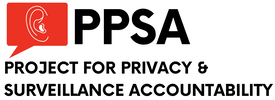












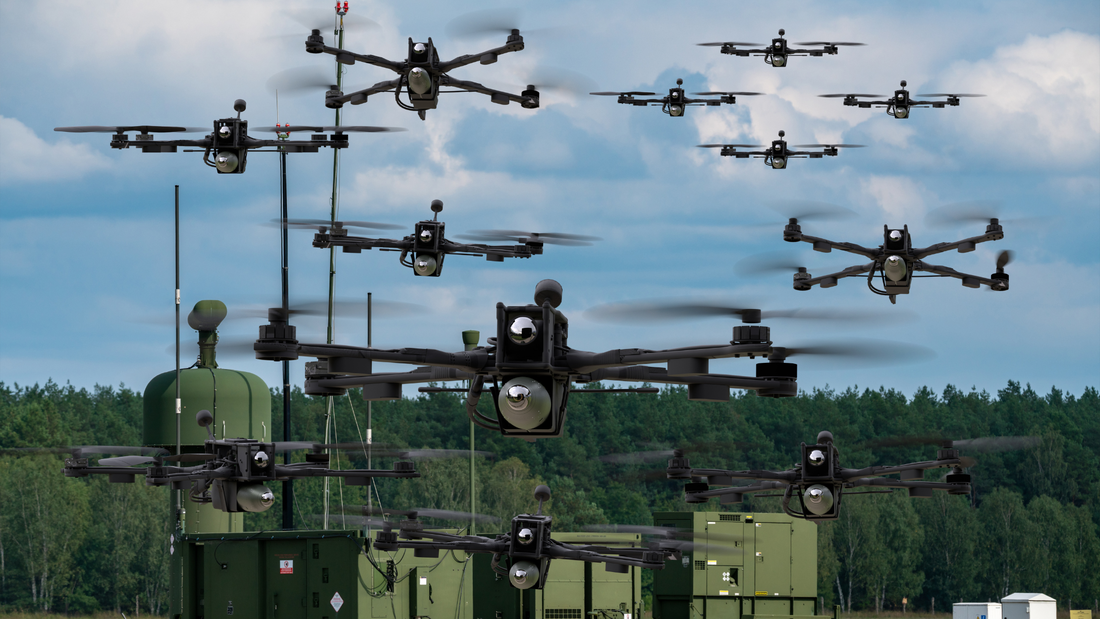
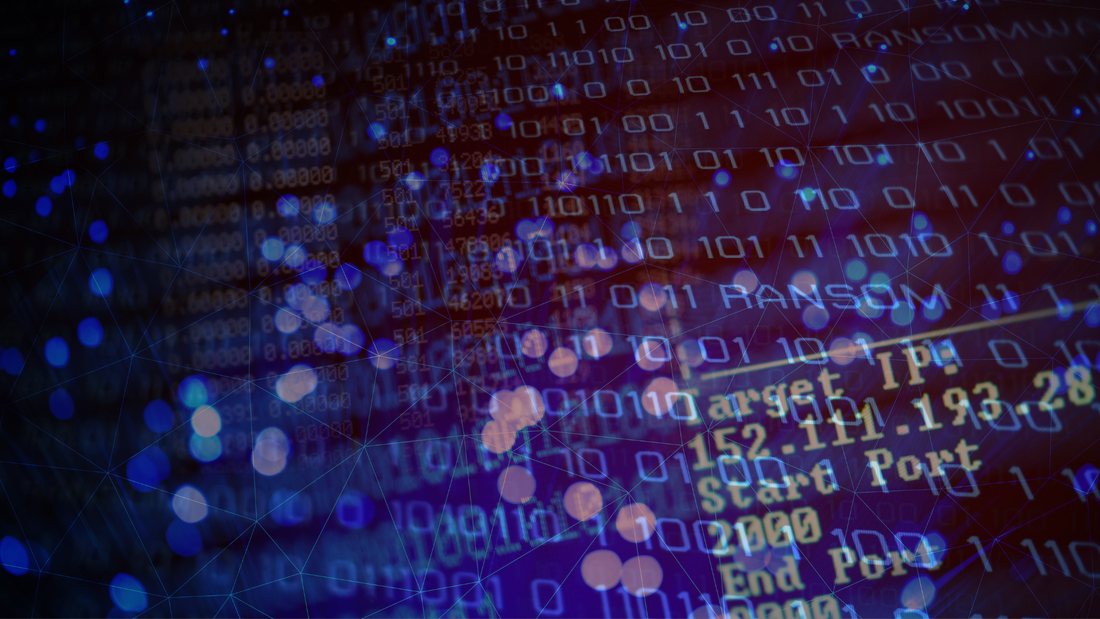

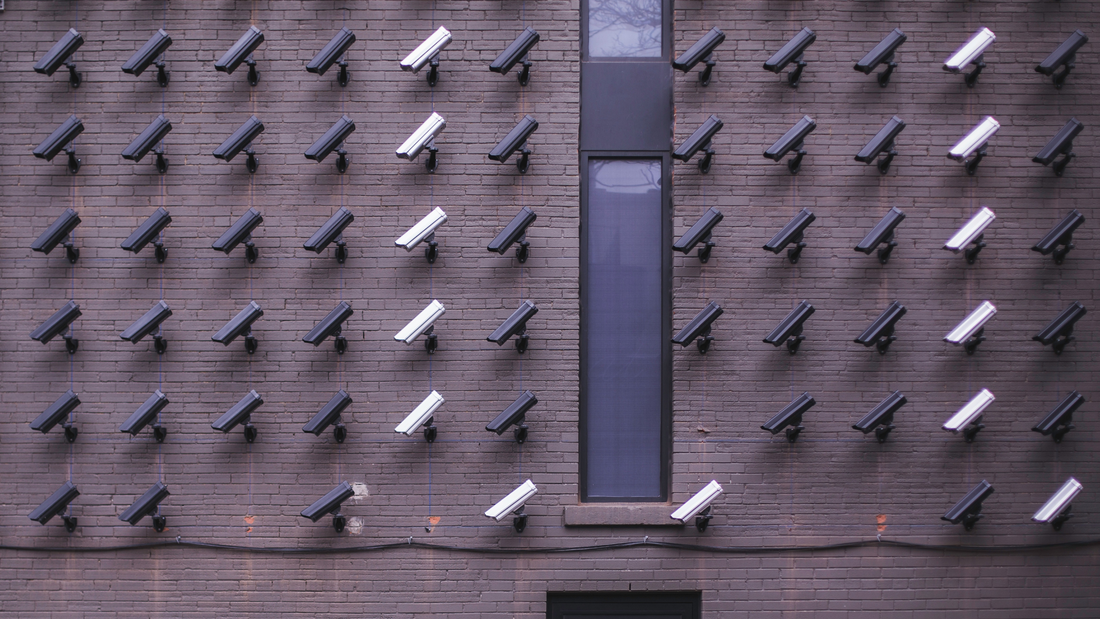

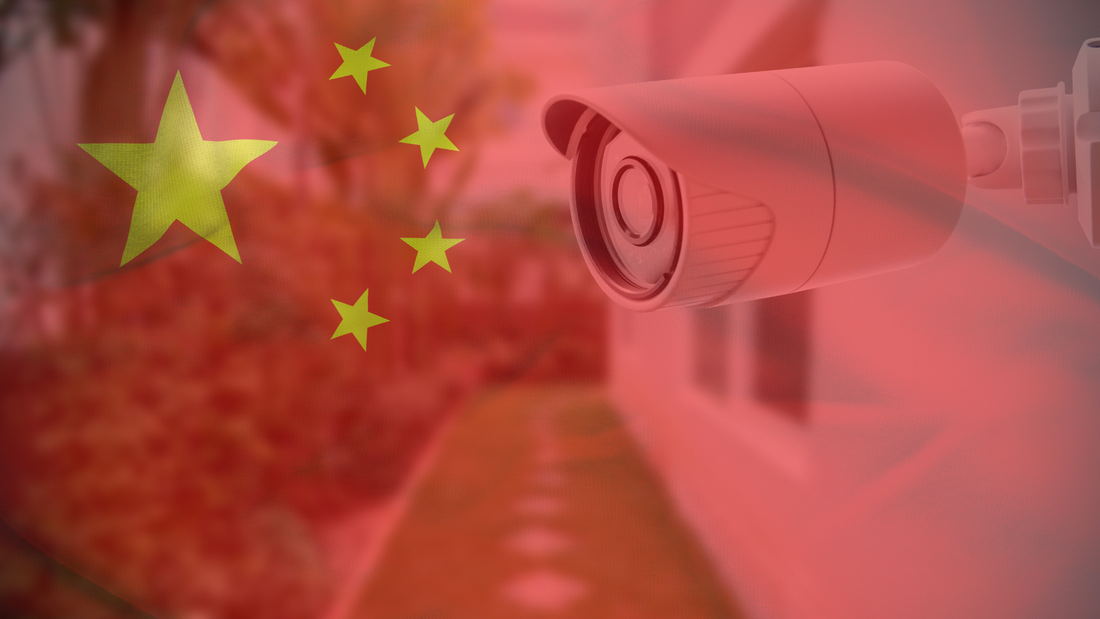

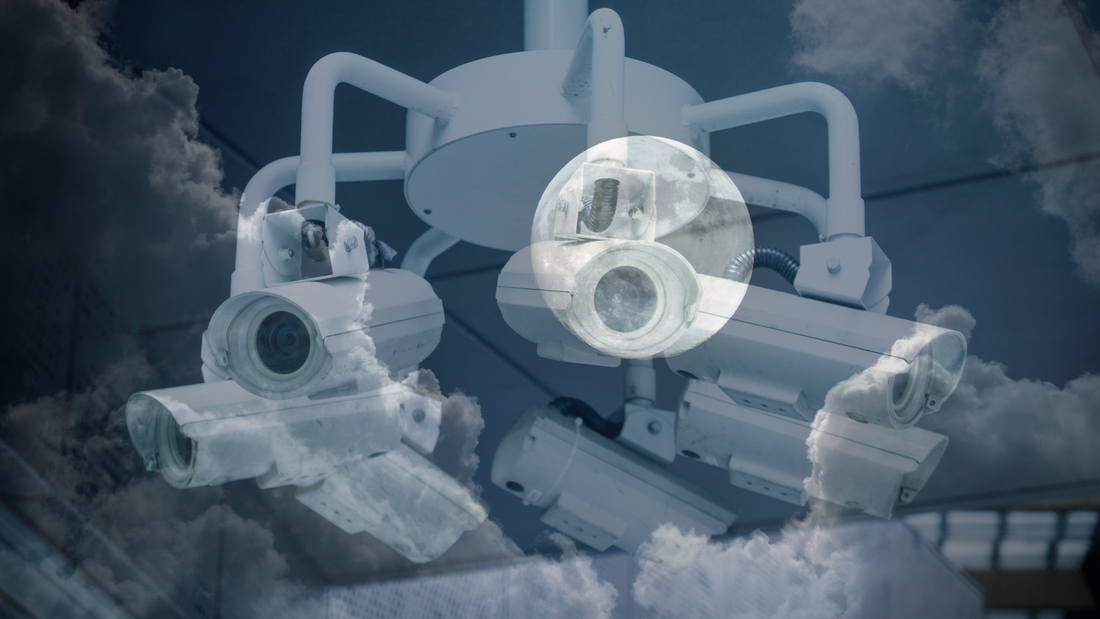
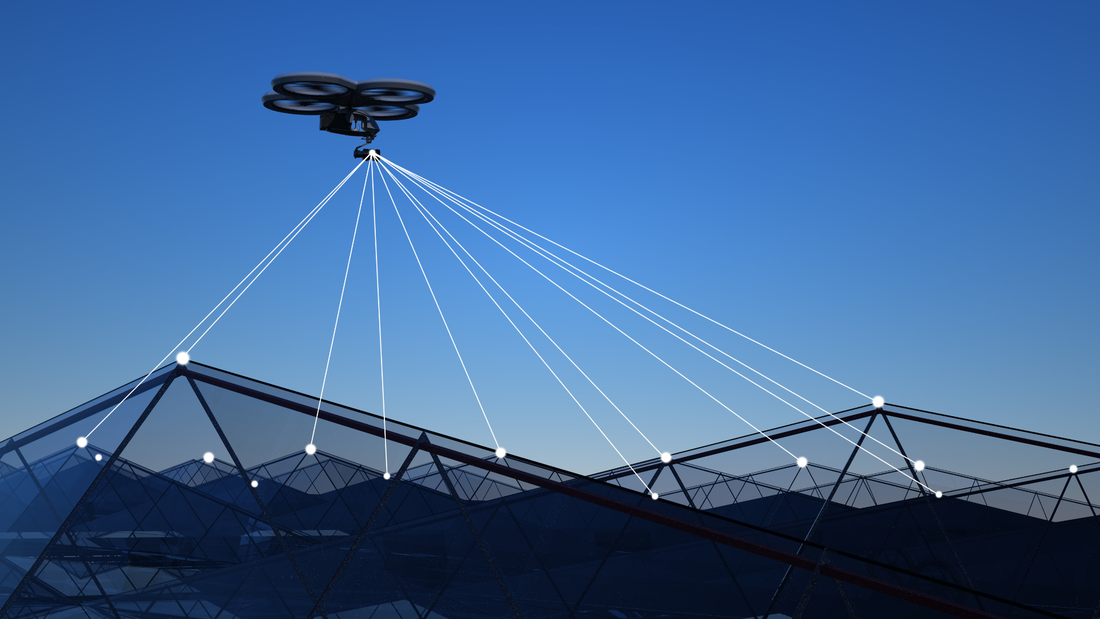
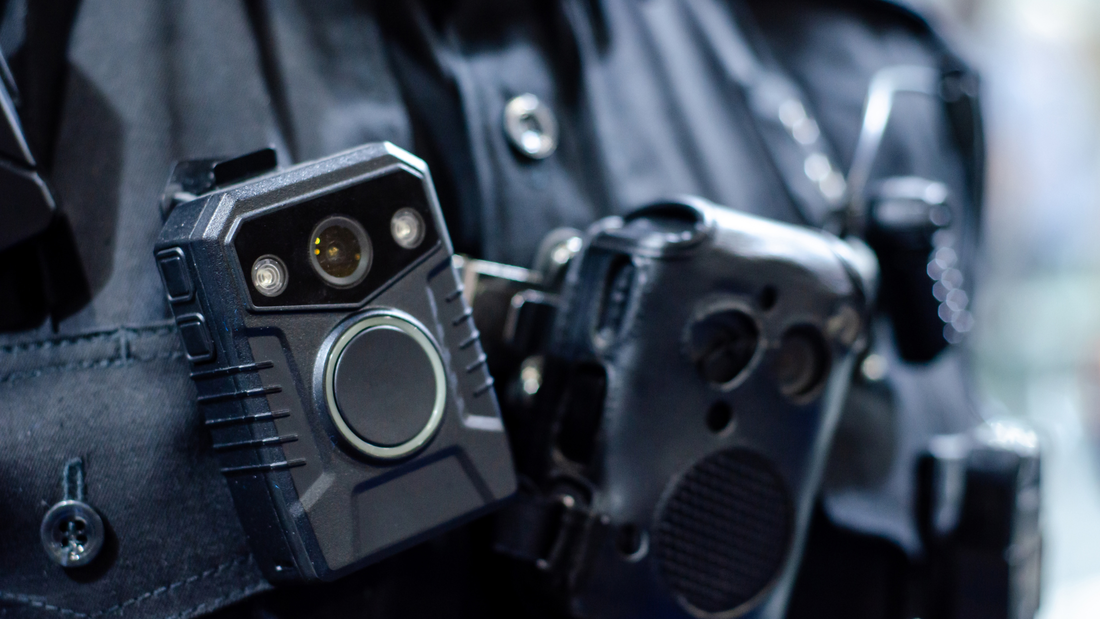
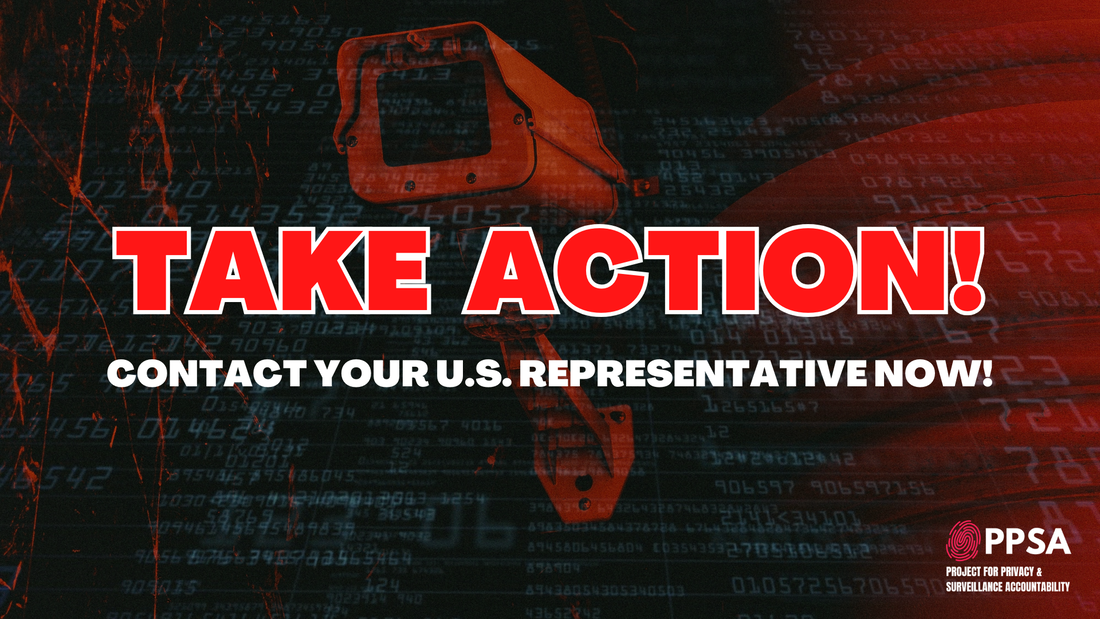
 RSS Feed
RSS Feed